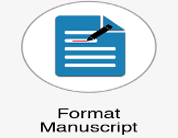Growth and yield of new hybrid rice in irrigated and rain-fed lowlands
Abstract
Keywords
Full Text:
View Full TextReferences
Virmani SS, Kumar I. Development and use of hybrid rice technology to increase rice productivity in the tropics. International Rice Research Notes. 2004;29(1): 10-19.
Huang M, Tang Q, Ao H, Zou Y. Yield potential and stability in super hybrid rice and its production strategies. Journal of Integrative Agriculture. 2017;16(5):1009-1017.
Yuan L. Development of super hybrid rice for food security in China. Engineering. 2015;1:13–14.
Suprihatno B. Hybrid Rice. In: Ismunadji M, Syam M, Yuswadi, editors. Rice Book 2. Agricultural Development and Research Agency. Center for Food Crops Research and Development. Bogor; 1989.p.377-390.
Villa JE, Henry A, Xie F, Serraj R. Hybrid rice performance in environments of increasing drought severity. Field Crops Research. 2011;125:14-24.
Afa L, Purwoko BS, Junaedi A, Haridjaja O, Dewi IS. Simulation of hybrid rice tolerance to drought stress on nutrients culture in seedling phase. Bioscience research. 2018;15(1): 530-539.
Afa L, Purwoko BS, Junaedi A, Haridjaja O, Dewi IS. Screening of hybrid rice tolerance through stimulated condition of drought stress in rain-fed lowland. Bioscience research. 2018;15(3): 1630-1637.
Harsanti L, Hambali, dan Mugiono. Analysis of adaptability paddy 10 genotype mutant in 20 locations yield trials in two seasons. Zuriat. 2003;14(1):1-7.
Swain P, Raman A, Singh SP, Kumar A. Breeding drought tolerant rice for shallow rain-fed ecosystem of Eastern India. Field Crops Research. 2017;209:168-178. doi:10.1016/j.fcr.2017.05.007.
Dewi ER, Whitbread AM. Use of Climate Forecast Information to Manage Lowland Rice-Based Cropping Systems in Jakenan, Central Java, Indonesia. Asian Journal of Agricultural Research. 2017;11:66-77.
Sudirman SS, Juarsah I. Determination of soil water retention in the laboratory. In: Kurnia U, Agus F, Adimihardja A, Dariah A, editors. Soil Physical Properties and Methods of analysis. Center for Research and Development of Agricultural Land Resources. Agricultural Development and Research Agency; 2006.p.167-176.
Fagi AM, Las I. Rice Growing Environment. In: Ismunadji M, Syam M, Yuswandi, editors. Rice Book 1. Center for Food Crops Research and Development Bogor; 1998.p.215-230.
Yoshida S. Fundamentals of Rice Crop Science. International Rice Research Institute, Los Baños, Laguna, Philippines; 1981.
Peng S, Khush GS, Virk P, Tang Q, Zou Y. Progress in ideotype breeding to increase rice yield potential. Field Crops Research. 2008;108:32-38.
Ma J, Ma WB, Ming DF, Yang SM, Zhu QS. Characteristics of rice plant with heavy panicle. Agricultural Sciences in China. 2006;5: 911-918.
Peng S, Khush GS, Cassman KG. Evaluation of a new plant ideotype for increased yield potential. In: Cassman KG, editor. Breaking the Yield Barrier. Proceedings of a Workshop on Rice Yield Potential in Favorable Environments. Los Banos, Philippines: International Rice Research Institute; 1994.p.5-20.
Peng S, Laza1 RC, Visperas RM, Khush GS, Virk P, Zhu D. Rice: progress in breaking the yield ceiling. In: New Direction for a Diverse Planet. Proceedings of the 4th International Crop Science Congress. Sept 26-Oct 1, 2004. Brisbane Australia; 2004.
Lafitte HR, Li ZK, Vijayakumar CHM, Gaob YM, Shi Y, Xu JL, Fu BY, et al. Improvement of rice drought tolerance through backcross breeding: Evaluation of donors and selection in drought nurseries. Field Crops Research. 2006;97:77-86.
Zang H, Tan GL, Xue YG, Liu LJ, Yang JC. Changes in grain yield and morphological and physiological characteristics during 60-year evolution of Japonica rice cultivars in Jiangsu. Acta Agronomica Sinica. 2010;36:133-140.
Peng S, Khush GS. Four decades of breeding for varietal improvement of irrigated lowland rice in the International Rice Research Institute. Plant Production Science. 2003;6:157-164.
Abdullah B, Dewi IS, Safitri SH, Lestari AP. Assembling a new type of rice through the repeated cross selection and anther culture. Food Crops Agriculture Research. 2008;27(1):1-8.
Shigenori O, Amane M, Tadahiko M. Effect of irradiance on the partitioning of assimilated carbon during the phase of grain filling in rice. Annals of Botany. 2003;92:357-364.
Virmani SS, Viraktamath BC, Casal CL, Toledo RS, Lopez MT, Manalo JO. Hybrid Rice Breeding Manual. IRRI. Los Banos. Laguna. Philippines; 1997.151 p.
Nonami H. Plant water relations and control of cell elongation at low water potentials. Journal of Plant Research. 1998;111:373-382.
Samaullah MY, Darajat AA. Upland rice genotypes tolerance to drought stress. Research Agriculture. 2001;20 (1): 17-23.
Kumar A, Verulkar S, Dixit S, Chauhan B, Bernier J, Venuprasad R , et al. Yield and yield-attributing traits of rice (Oryza sativa L.) under lowland drought and suitability of early vigor as a selection criterion. Field Crops Research. 2009;114:99-107.
Ahadiyat YR, Hidayat P, Susato U. Drought tolerance, phosphorus efficiency and yield characters of upland rice lines. Emirates Journal of Food and Agriculture. 2014;26(1): 25-34.
Kumar R, Venuprasad R, Atlin GN. Genetic analysis of rain-fed lowland rice drought tolerance under naturally-occurring stress in estern India: Heritability and QTL effects. Field Crops Research. 2007;103:42-52.
Ji XM, Raveendran M, Oane R, Ismail A, Lafitte R, Bruskiewich R, Cheng SH, Bennett J. Tissue-spesific expression and drought responsiveness of cell wall invertase gene of rice at flowering. Plant Molecular Biology. 2005;59:945-964.
Jun MA, Wen-bo MA, Ming DF, Yang SM, Zhu QS. Characteristics of rice plant with heavy panicle. Agricultural Sciences in China. 2006;5:911-918.
Pantuwan G, Fukai S, Cooper M, Rajatasereekul S, O’Toole JC. Yield response of rice (Oryza sativa L.) genotypes to drought under rain-fed lowland 3. Plant factors contributing to drought resistance. Field Crops Research. 2002;73:181-200.
Suprihatno B, Daradjat AA, Satoto, Baehaki SE, Suprihanto, Setyono A, Indrasari SD, Wardana IP, Sembiring H. Description Rice Varieties. Rice Research Institute. Agricultural Development and Research Agency; 2011.p.118.
Mitra J. Genetic and genetic improvement of drought resistance in crop. Plant Science Current Research. 2001;80:758-763.
Fukai S, Cooper M. Development of drought-resistant cultivars using physio-morphological traits in rice. Field Crops Research. 1995;40:67-68.
Fukai S, Pantuwan G, Jongdee B, Cooper M.Screening for drought resistance in rain-fed lowland rice. Field Crops Research. 1999;64:71–74.
Mitchell JH, Siamhan D, Wamala MH, Risimeri JB, Chinyamakobvu E, Henderson SA, Fukai S. The use seedling leaf death score for evaluation of drought resistance of rice. Field Crops Research. 1998;55:129-139.
Afa L. Selection of Hybrid Rice to Drought for Development in rain-fed Lowland [Thesis]. Bogor (Indonesia):Bogor Agriculture Institute; 2013.
Huang M, Shan S, Cao F, Zou Y. The solar radiationrelated determinants of rice yield variation across a wide range of regions. Wageningen Journal of Life Sciences. 2016;78: 123–128.
Huang M, Shan S, Zhou X, Chen J, Cao F, Jiang L, Zou Y. Leaf photosynthetic performance related to higher radiation use efficiency and grain yield in hybrid rice. Field Crops Research. 2016;193: 87–93.
DOI: https://doi.org/10.36462/H.BioSci.20217
Refbacks
- There are currently no refbacks.
Copyright (c) 2020 Afa et al

This work is licensed under a Creative Commons Attribution 4.0 International License.
...........................................................................................................................................................
Other "Highlights in" Journals
Highlights in Bioinformatics, Highlights in Chemistry, Highlights in Science, Highlights in Microbiology, Highlights in Plant Science
........................................................................................................................................
International Library of Science "HighlightsIn" is an Open Access Scientific Publishers, aiming to science and knowledge support












